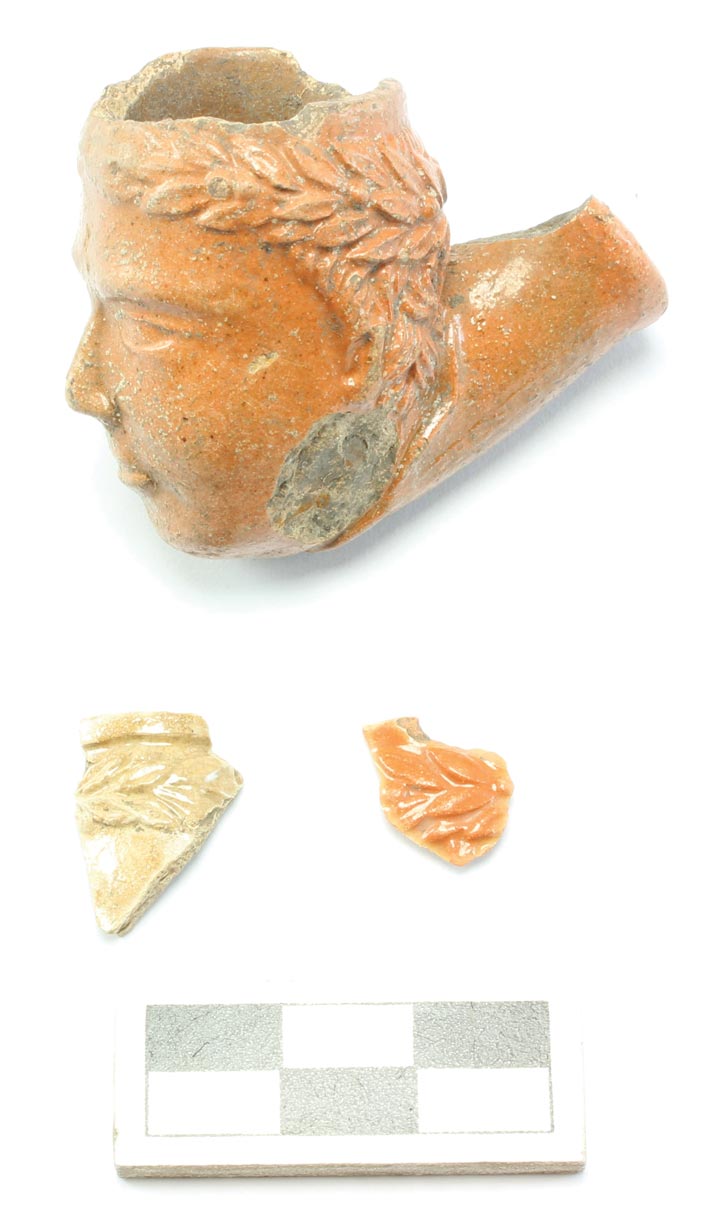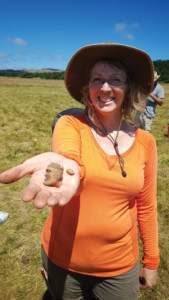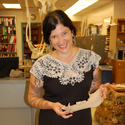Digging Jacksonville – March 2018
Dozens of clay tobacco pipes have been recovered by the Southern Oregon University Laboratory of Anthropology (SOULA) from archaeological sites in Jacksonville and throughout Southern Oregon. These have included stemmed and reed-stem pipes (with a replaceable stem that is inserted into the shank) that are either plain, decorated, or anthropomorphic shapes. One type of anthropomorphic clay tobacco pipe manufactured by European and United States pipemakers in the mid-nineteenth century were “Political” pipes that depicted the effigies of United States political figures. These included Presidents George Washington, Zachary Taylor, Millard Fillmore, and Franklin Pierce; politicians, such as Henry Clay and Lewis Cass; and popular figures, such as Martha Washington. SOULA has recovered numerous political pipes from archeological sites in Southern Oregon, including those associated with the Rogue River War of 1855-1856.
For my Southern Oregon University senior thesis, I built a typology of clay tobacco pipes recovered from two historical Rogue River War sites: Miners’ Fort, a civilian fort outside of Gold Beach, occupied for two months in the winter of 1856; and Fort Lane, an Army military post outside of Central Point, occupied from 1853-1856. My typology focused on identifying the portion of the pipe fragments we recovered, (either bowl, spur, shank, and/or stem) the country or state in which it was manufactured, the type of materials used to form it, and the presence or absence of maker’s marks, mold lines, glazes, and decorations, including specific effigies, such as United States presidents.
I identified four types of political pipes from the Miners’ Fort and Fort Lane sites: Presidents Taylor, Fillmore, and Washington, as well as his wife, Martha. Most of these reed-stem pipes were manufactured in Uslar or Grossalmerode, Germany, for export to the United States. I was amazed to learn that in the 1850s these pipes traveled thousands of miles from Germany to the outskirts of the western frontier. This was especially interesting when considering the limited means of transportation into Southern Oregon in the early 1850s, which typically consisted of using pack mules to bring supplies over the surrounding mountain ranges.
The President Taylor (1849-1850) pipes are often identified by the script or block letters of “Rough and Ready” on the shank, a reference to his nickname of “Old Rough and Ready,” or by their wide laurel wreath, sideburns, and prominent jowls. President Fillmore (1850-1853) pipes are often identified by the block letters of “PRESIDENT” and “FILLMORE” on either side of the shank or by a narrow laurel wreath. President Washington (1789-1797) pipes are commemorative in nature and are often identified by the block letters “WASHINGTON” on the shank or by a crown of V’s. Martha Washington pipes, sometimes referred to as “Victoria” or “Liberty” pipes, are often identified by their curly hair and two beaded necklaces. These are just a few of the political faces of clay tobacco pipes that have been recovered from Southern Oregon archaeological sites.
Featured image: Three President Fillmore pipes were recovered from Miners’ Fort during excavations at SOULA’s 2016 Field School on the southern Oregon coast. These reed-stem pipes are of German origin. The top pipe has the words “PRESIDENT” and “FILLMORE” in block letters on either side of the shank. The two pipes on the bottom are representative of the fragmentary nature of archaeological artifacts used for identification.


 Chelsea Rose is an historical archaeologist who specializes in the settlement and development of the American West. Chelsea and the Southern Oregon University Laboratory of Anthropology (SOULA) conduct archaeology across Oregon and have done several projects in Jacksonville. You can reach Chelsea at rosec@sou.edu and follow SOULA on
Chelsea Rose is an historical archaeologist who specializes in the settlement and development of the American West. Chelsea and the Southern Oregon University Laboratory of Anthropology (SOULA) conduct archaeology across Oregon and have done several projects in Jacksonville. You can reach Chelsea at rosec@sou.edu and follow SOULA on